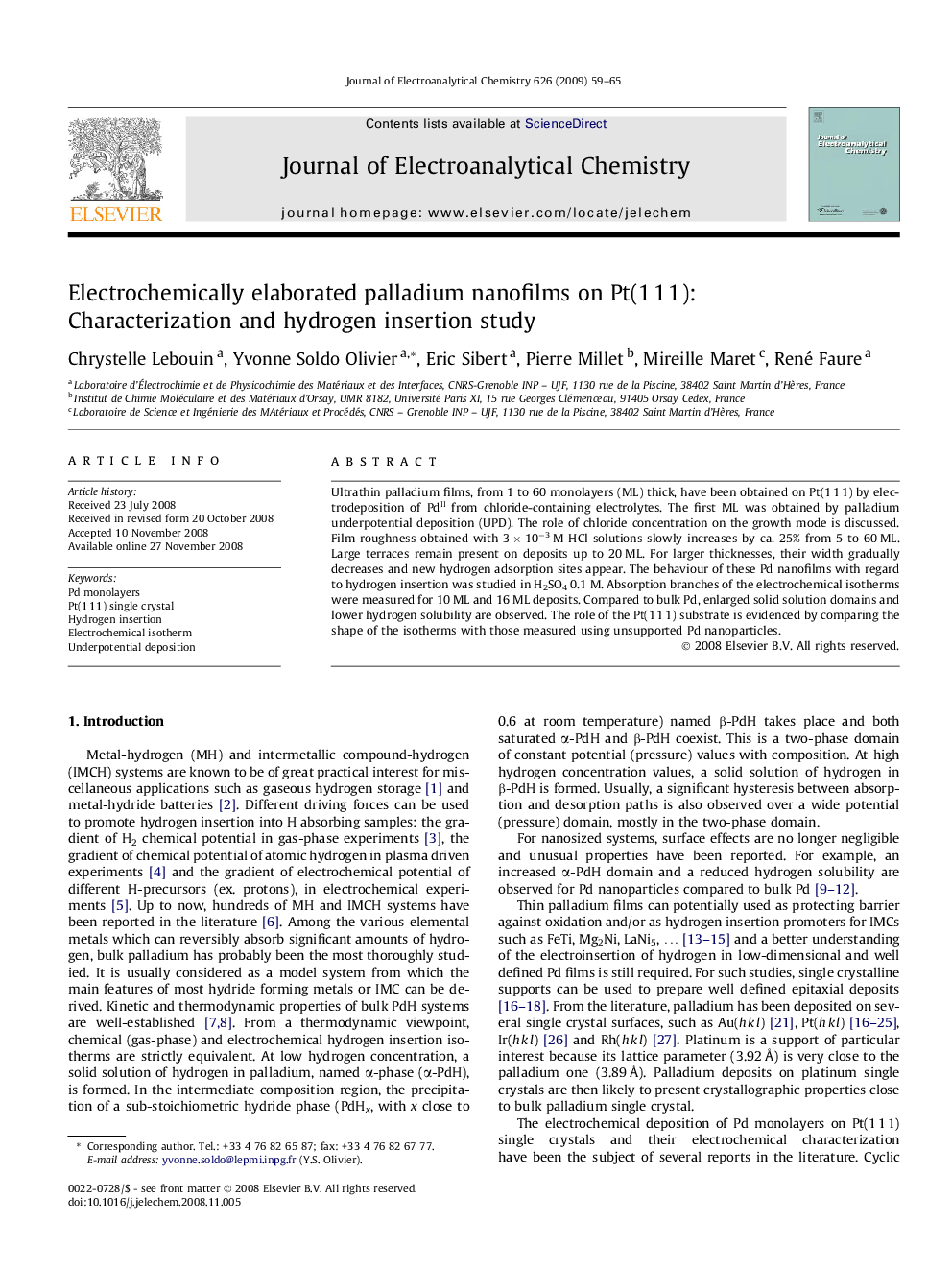| Article ID | Journal | Published Year | Pages | File Type |
|---|---|---|---|---|
| 220244 | Journal of Electroanalytical Chemistry | 2009 | 7 Pages |
Ultrathin palladium films, from 1 to 60 monolayers (ML) thick, have been obtained on Pt(1 1 1) by electrodeposition of PdII from chloride-containing electrolytes. The first ML was obtained by palladium underpotential deposition (UPD). The role of chloride concentration on the growth mode is discussed. Film roughness obtained with 3 × 10−3 M HCl solutions slowly increases by ca. 25% from 5 to 60 ML. Large terraces remain present on deposits up to 20 ML. For larger thicknesses, their width gradually decreases and new hydrogen adsorption sites appear. The behaviour of these Pd nanofilms with regard to hydrogen insertion was studied in H2SO4 0.1 M. Absorption branches of the electrochemical isotherms were measured for 10 ML and 16 ML deposits. Compared to bulk Pd, enlarged solid solution domains and lower hydrogen solubility are observed. The role of the Pt(1 1 1) substrate is evidenced by comparing the shape of the isotherms with those measured using unsupported Pd nanoparticles.
